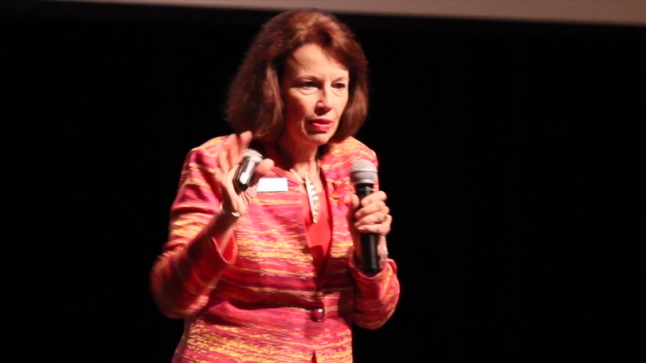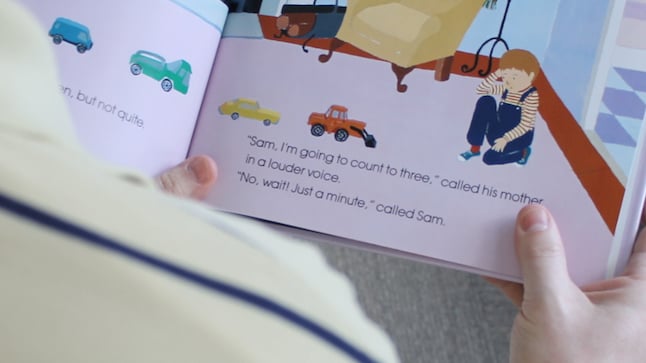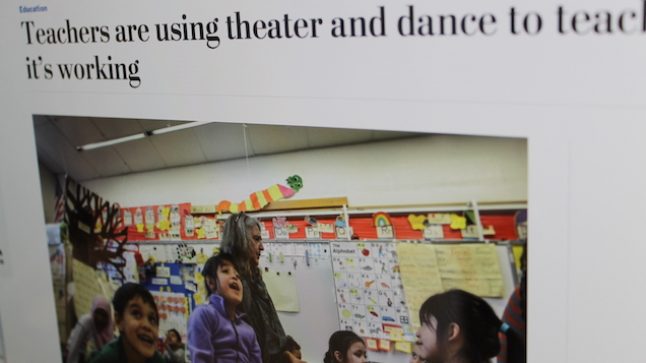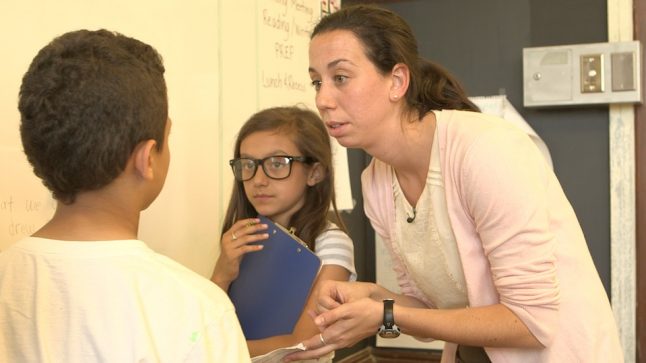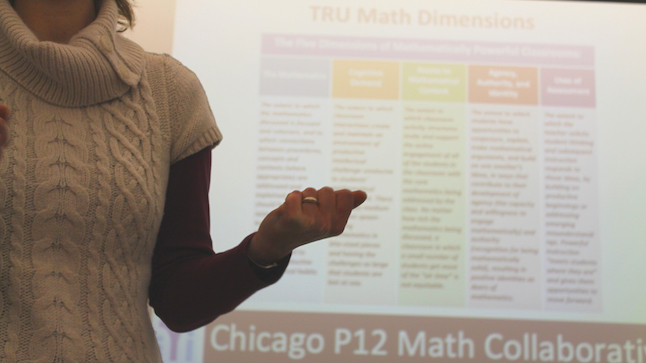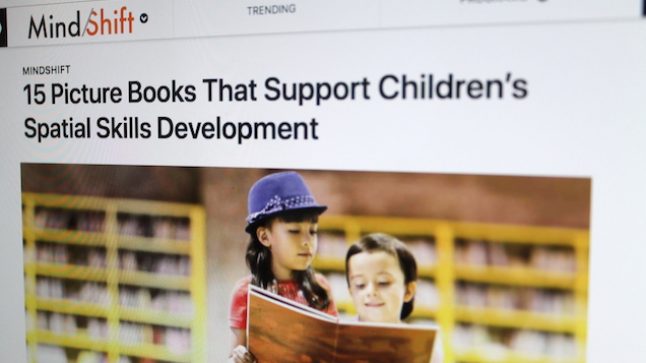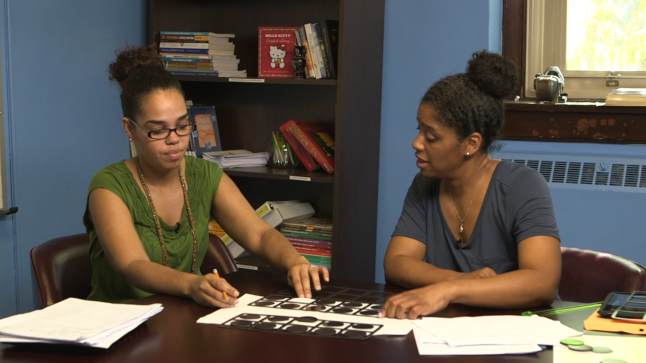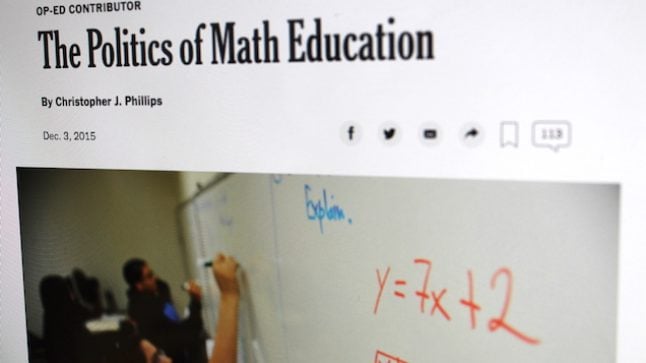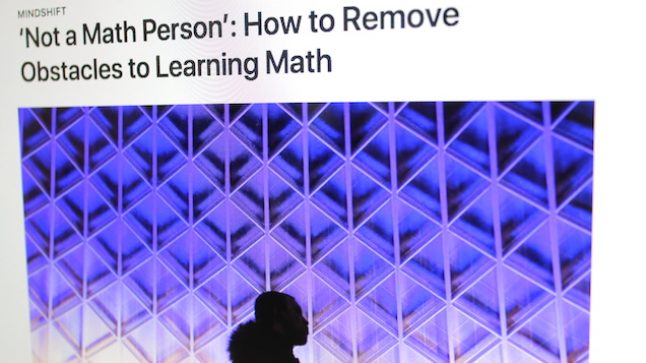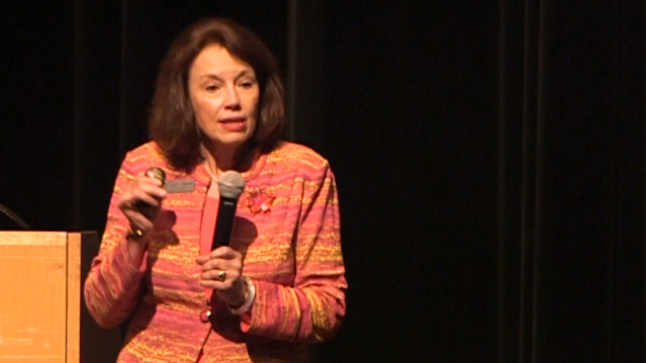2nd Grade Math
Series: Hear from the Experts
Discussions that Advance Mathematical Learning with Diane Briars
March 13, 2016
Summing up the point of the day's lesson with the whole class is an extremely important, yet often neglected part of any math lesson.
- Age/Grade Level: Adult Learners, Pre-K, Kindergarten, 1st Grade, 2nd Grade, 3rd Grade
- Tags Diane Briars, Planning
Series: Book Ideas March 8, 2016
4 More Children’s Books that Explore Measurement Concepts
Some time ago we suggested a few books that are great for exploring measurement concepts in primary grades. Now we're at it again.
- Topic: Measurement
- Age/Grade Level: Pre-K, Kindergarten, 1st Grade, 2nd Grade, 3rd Grade
- Tags Comparing, Is It Larger? Is It Smaller?, Anne Rockwell, One Bean, Marisabina Russo, The Line Up Book, Balancing Act, Tana Hoban, Ellen Stoll Walsh, Books
Series: Hear from the Experts March 7, 2016
Can Arts Education Improve Early Math Classrooms?
New research is showing how arts education and math can build off of one another. Although many talk of STEM education, increasingly an importance on STEAM education is taking root.
Series: Focus on the Lesson February 25, 2016
A Gallery Walk to Inspire Student Collaboration
This third grade teacher leads a gallery walk with her students with the purpose of having children explain their thinking with peers.
- Topic: Measurement, Shape
- Age/Grade Level: 1st Grade, 2nd Grade, 3rd Grade
- Tags Gallery walk
Series: About the Collaborative February 2, 2016
Collaborative Highlights CPS Work at National Math Teacher Conference
For three years the Collaborative has been partnering with Chicago Public Schools and Depaul University as a network of support to teachers.
- Age/Grade Level: Pre-K, Kindergarten, 1st Grade, 2nd Grade, 3rd Grade
Series: Book Ideas January 27, 2016
15 Picture Books To Support Math Spatial Reasoning Skills
This link jumps into books that give children a chance to explore spatial reasoning. Over and under, going that direction or going the other direction, mapping, perspective.
- Topic: Spatial Relationships
- Age/Grade Level: Pre-K, Kindergarten, 1st Grade, 2nd Grade, 3rd Grade
- Tags Books
Series: Focus on Collaboration January 26, 2016
Planning and Reflecting with a Ten Frame Number Talk
These two first-grade teachers plan a visual number talk together using ten frames. After both try it, they reflect on the strategies that students used.
- Topic: Number Operations
- Age/Grade Level: Pre-K, Kindergarten, 1st Grade, 2nd Grade, 3rd Grade
- Tags Number Talks
Series: About Early Math December 7, 2015
Math in School Shaped by Politics
The over-politicization of math education is a major cause for United States students' ongoing struggles with math in school.
- Age/Grade Level: Pre-K, Kindergarten, 1st Grade, 2nd Grade, 3rd Grade
- Tags Common Core, CCSS
Series: Hear from the Experts December 2, 2015
Neuroscience Research Informs Math Pedagogy
With appropriate instruction, math can be accessible to nearly every student.
Series: Hear from the Experts November 19, 2015
Rich Math Tasks with Diane Briars
Diane Briars describes math tasks as "the vehicles for mathematical learning." It is important that tasks require reasoning and problem solving strategies.
- Age/Grade Level: Adult Learners, Pre-K, Kindergarten, 1st Grade, 2nd Grade, 3rd Grade
- Tags Problem Solving, Diane Briars
Do the math.
Free videos.
Free newsletter packed with ideas.
Free professional learning modules.
